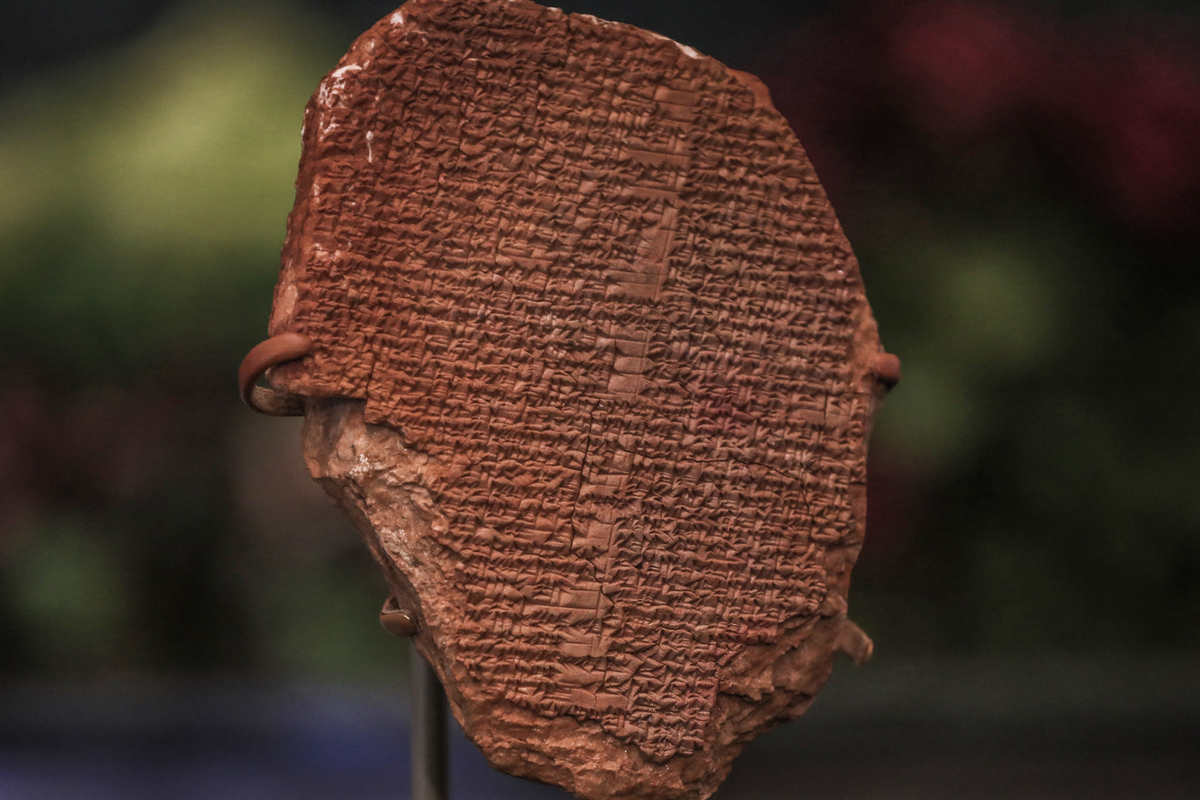Scientists have taught artificial intelligence to decipher inscriptions in the world’s most ancient languages
[ad_1]

The mysterious dialect of the inhabitants of the ancient world can finally be completely deciphered thanks to artificial intelligence, writes Daily Mail.
Experts estimate that there are still a million cuneiform tablets in the world, but these writings, left by the ancient inhabitants of Mesopotamia, require painstaking work by archaeologists to translate and catalog their contents. It has been estimated that 90 percent of cuneiform texts remain untranslated.
But now a team of German researchers has come up with a new way to train computers to recognize cuneiform and even make the contents of millennia-old tablets searchable, like on a website, allowing large libraries of these ancient texts to be digitized and collected.
This could reveal previously unknown details about the lives of the ancients, as the tablets contained details of such significant feats as temple building, down to such petty squabbles as complaints about customer service.
German scientists taught AI two cuneiform languages, Sumerian and Akkadian. According to the Daily Mail, Sumerian was spoken around 5,000 years ago and was eventually replaced by Akkadian, but both languages were used in written form before the Christian era in Mesopotamia, which covered what is now Iraq and parts of what became Iran, Kuwait , Syria and Turkey.
Thus, the cuneiform tablets left behind are not only written in several languages, but also date back thousands of years. The wedge-shaped cuneiform characters that formed the basis of writing in ancient Mesopotamia were carved onto clay tablets, so they are three-dimensional.
Combined with the fact that ancient writing has eroded through time and mishandling, their properties can make them difficult to scan into a computer for historians and archaeologists to use for research.
Now, using 3D models of about 2,000 signs, they trained a computer program to scan their text and transcribe it—like using a smartphone camera to turn a handwritten note into a text document.
The purpose of this study was not to translate the contents of the tablets, but rather to make it easier for other researchers to do so.
And as the Daily Mail writes, not only has the ravages of time worn away their unfired clay surface, making translation difficult, but a single tablet or even a small line of text can be difficult to understand without context – like trying to understand a book by reading one sentence on one page straight in the middle.
A new artificial intelligence program could help fill the gaps, allowing translators to work more efficiently.
“Until now, it has been difficult to access the contents of many cuneiform tablets at once – you kind of need to know exactly what you are looking for and where,” senior study author Hubert Mara, an associate professor at Martin Luther University Halle-Wittenburg in Germany, said in a statement. .
The tablets that the German scientists used to train their computer program were taken from a publicly available set of 3D scans containing Sumerian cuneiform tablets – the earliest known civilization of southern Mesopotamia, which is now south-central Iraq.
In addition to helping researchers decipher the contents of cuneiform tablets, the new system allows them to create a search engine of sorts.
The contents of these tablets will help humanities researchers better understand what life was like in ancient Mesopotamia. “They contain everything from shopping lists to court decisions. The tablets provide a glimpse into humanity’s past several millennia ago. However, they are heavily weathered and therefore difficult to decipher even for an experienced eye,” says Hubert Mara.
Part of the task was to train artificial intelligence to recognize the wedges and signs that make up cuneiform, notes the Daily Mail.
The researchers loaded tens of thousands of characters into the program, creating a new dataset that can be used by other researchers who want to study cuneiform. After training the AI, they tested it on other signs to see how reliable it was.
They found that artificial intelligence could accurately recognize cuneiform texts and characters with approximately 76 percent accuracy. And it didn’t just work with high-quality 3D scans.
“We were surprised to find that our system works well even with photographs, which are actually poorer source material,” said Ernst Stötzner, a student in Hubert Mara’s lab.
Stetzner and Mara’s team plans to use an even larger sample of tablets to train their artificial intelligence and achieve more accurate readings. Scholars suspect that the relatively small number of tablets may have limited its accuracy.
In comparison, another AI trained to recognize a different cuneiform-based language achieved 90 percent accuracy. Another possibility would be to break up the images on the sign into smaller segments so that the AI can process less information at a time.
[ad_2]
Source link








